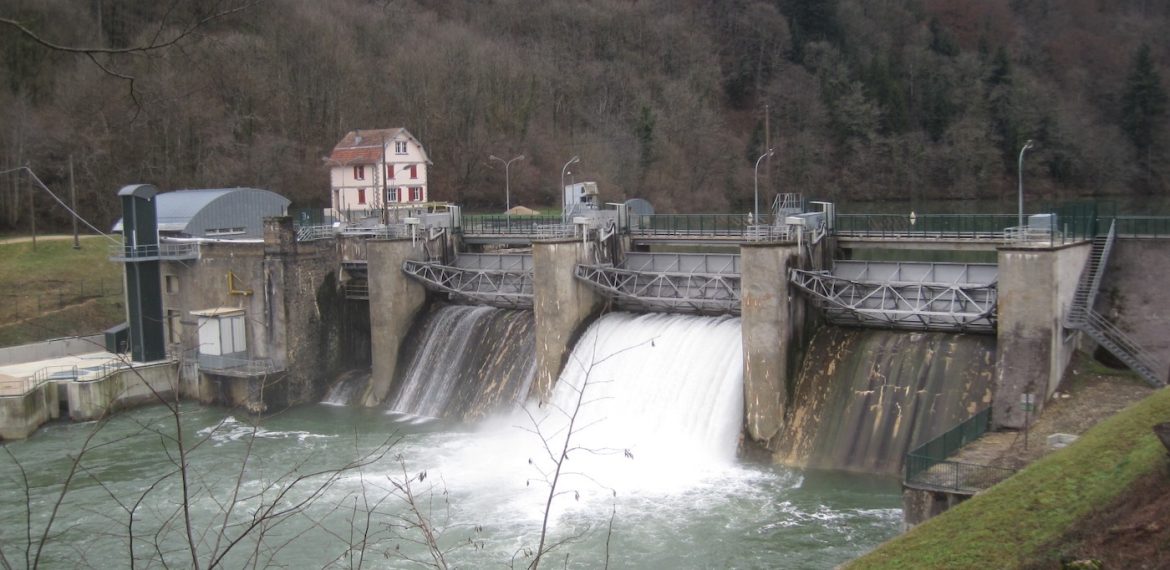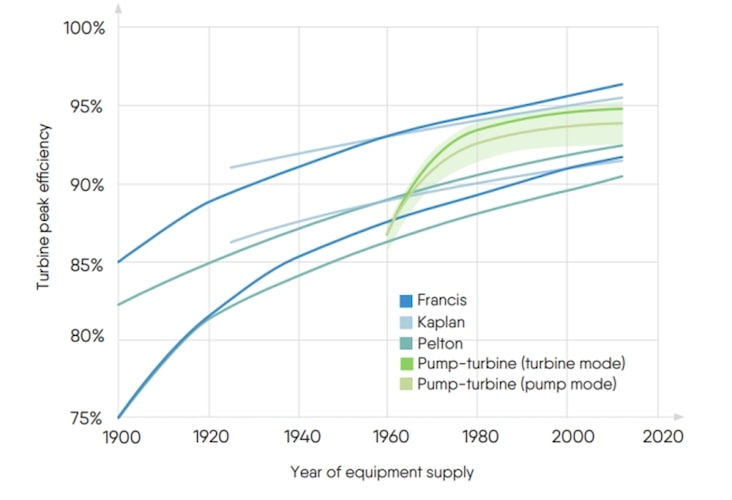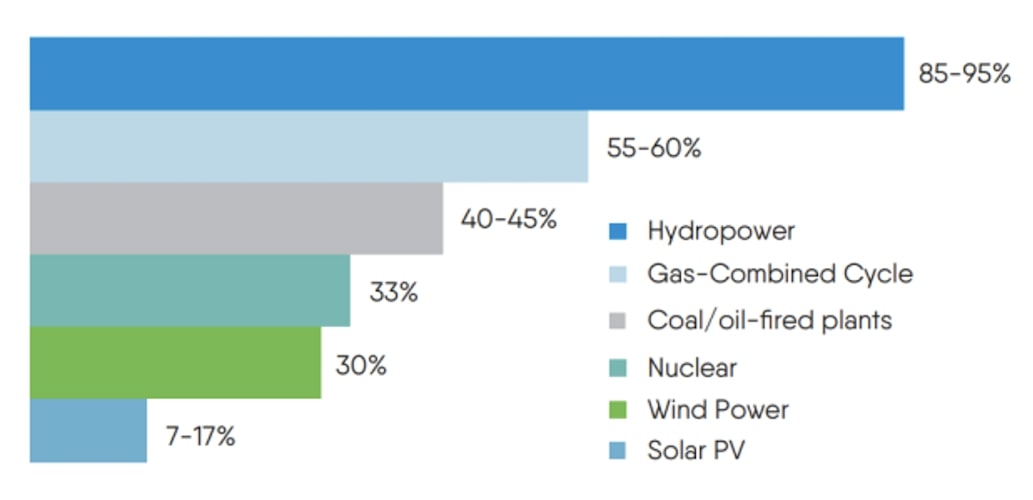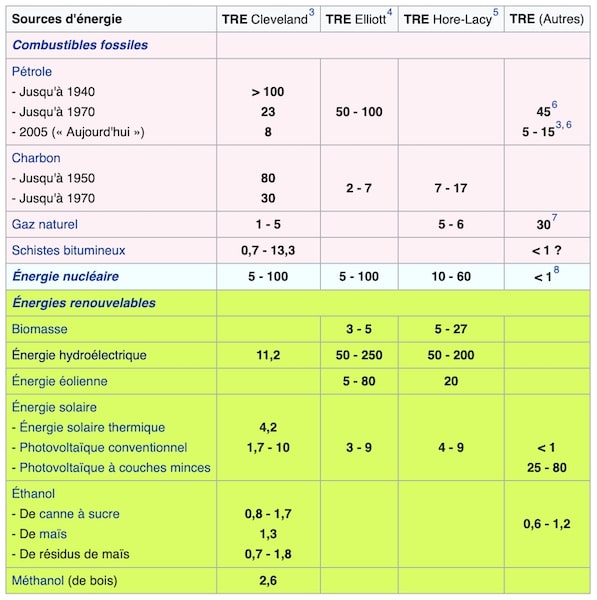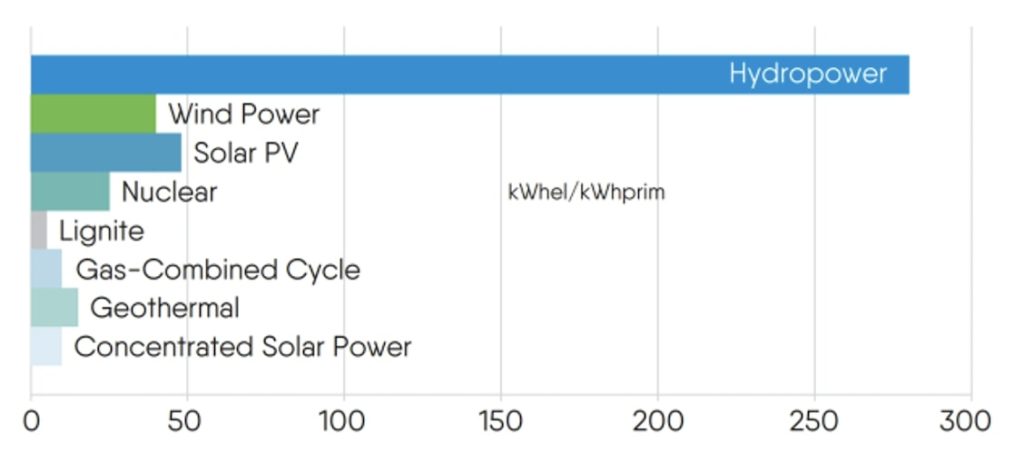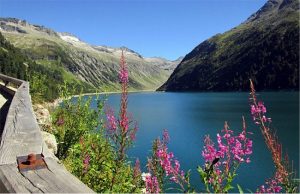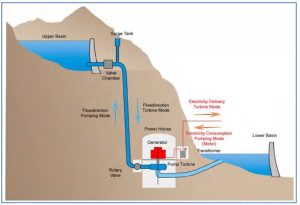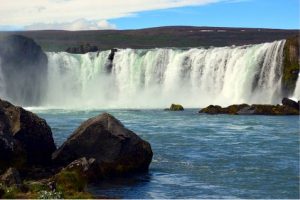Compared to rapidly growing renewable energy sources such as solar and wind, is hydropower still competitive? An answer must take into account all aspects of its development: energy and environmental efficiency, rate of return, safety, impact on the biosphere, consumption of materials.
___
Energy consumption has very strict requirements and requires adequate means of production. It must be available in quality, quantity and at the chosen time, while spending the minimum. In the 21st century, energy shortages are completely unacceptable. The production and storage of energy must therefore meet these criteria, knowing that this production, like any human activity, disturbs the environment.
In competition with other energy sources, hydropower (Read: Hydraulic works) and (Read: Hydropower, diversity and specificity) calls upon different resources by consuming, destroying or altering them. It is therefore necessary to measure and weigh these resources in order to make an informed choice, which implies taking into account all resource requirements.
- During construction and implementation of developments:
- energy that must be spent on this occasion,
- materials required,
- time elapsed, or delay, between the decision to proceed with the development and its commercial operation
- number of human lives affected, through deaths and accidents.
- During the useful life of the development:
- materials, fuels and other resources consumed
- environmental fluids such as air and water, polluted, altered and made less accessible in quality and quantity for fauna, flora and humans,
- space, in volume and surface, occupied partially or totally by the means of production and storage,
- maintenance costs,
- number of human lives affected, as for the construction.
In the development and operation of an energy project, the engineer must maximize the quality and quantity of production while minimizing the social, financial and environmental costs (Read: Hydroelectricity, environmental and social impacts).
1. Energy efficiency
Energy efficiency expresses the proportion between the energy produced and the gross energy available. By maximizing this efficiency, more energy is obtained without increasing environmental damage. Hydroelectricity in this area is highly favored:
- hydraulic turbines are operated in a power range where their efficiency is generally higher than 90%;
- hydraulic alternators have efficiencies above 98%;
- to which must be added transformation, transmission and distribution losses, which, for long distance lines and very high voltage transformation, are about 5%.
In hydropower, research and development is continuous but more importantly each site is optimized. Over time, the efficiency of turbines has continued to improve (Figure 1), mainly due to the advent of digital solutions for design and manufacturing.
Ultimately, when compared to other energy sources, the advantage of hydropower is striking (Figure 2).
2. Energy Returned On Energy Invested (EROEI)
The implementation of an energy project and its operation consume energy. During the expected life cycle, the energy output of the project is compared to the energy consumed. This contribution is expressed as a ratio: if it is greater than 1, it allows the project to be considered an energy source.
The EROEI or EROI (Energy Return On Investment) expresses this aspect of the efficiency of an energy source. It is a matter of considering the energy to build and maintain a production system in relation to its expected production during its useful life: Energy Return on Energy Invested (EROEI) = Energy Return On Investment (EROI)
The various studies available converge on a higher EROI for hydropower than for other energy sources. Although some studies are more pessimistic, Hydro-Québec, for its facilities, puts forward a figure to more than 250. There is a consensus that hydropower is more efficient in this respect than any other energy source (Table 1 and Figure 3).
Hydropower has a significant EROI advantage over its closest competitor. When the EROI of a resource is less than or equal to 1, that energy source becomes an “energy sink” and can no longer be considered a primary energy source.
In hydroelectricity, pumped-storage facilities, with an overall efficiency of over 80% for the complete cycle, consume more than they produce (Read: Pumped-storage facilities).
Despite this fact, their use allows the network to operate more in line with demand by absorbing surplus energy and releasing it during demand peaks. They are therefore extremely useful and increasingly in demand as more and more intermittent energy sources such as solar and wind power are connected to the grid. It is true that often adductions to the upstream reservoir must be turbined and thus increase the production capacity compared to pumping. The remarkable Grand Maison installation near Grenoble in France is a good example of this, with 8 pump turbines and 4 turbines, each of 150MW (Figure 4).
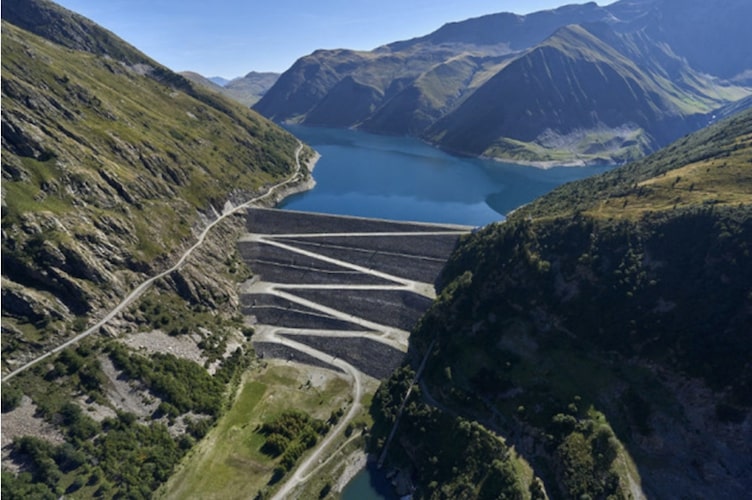
Figure 4. View of the Grand Maison upstream reservoir located more than 900 m above the downstream reservoir.
3. Greenhouse gas production
All power generation technologies produce greenhouse gases (GHGs) during their life cycle (construction, operation and decommissioning). Hydropower produces mostly carbon dioxide and, to a lesser extent, methane, which is the result of the degradation of flooded organic matter (See: The Environment in Energy Policy). On a life-cycle basis, the net GHG emissions of Quebec’s hydroelectric plants are similar to those of wind turbines, and are much lower than those of natural gas or coal-fired plants (Figure 5).
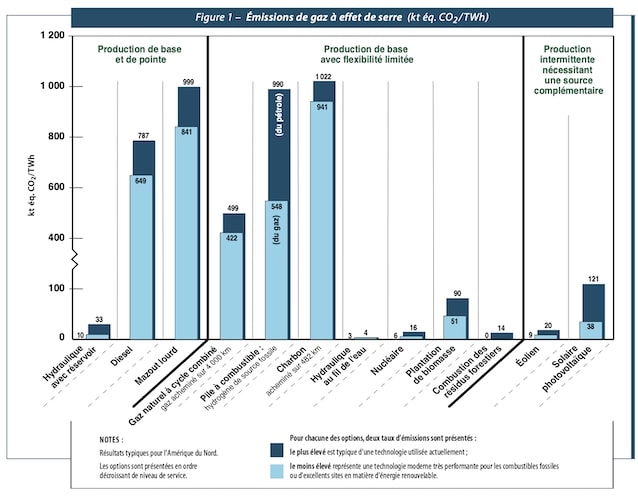
Figure 5: Comparison of GHG production of electricity generation options in the minimum and maximum scenarios. [Source: Hydro Quebec https://archives.bape.gouv.qc.ca/sections/mandats/hydro-canyon_saint-joachim/documents/DA19.pdf]
GHG production is a well-known environmental concern. Here again, hydropower stands out from other means of production. To prove this, we must differentiate between the contributions of reservoir and run-of-river hydroelectric plants (Figure 6). Indeed, it is the upstream reservoir that, by flooding the land when it is filled, is responsible for the highest production of GHG. On the other hand, this reservoir gives a lot of flexibility to the management of the network by allowing to fluctuate the production to follow the demand. On the other hand, run-of-river power plants hardly flood the river banks and, as a result, produce very little GHG (Read: Run-of-river hydropower, from project to operation). These plants must operate in accordance with the seasonal flow of the river rather than the demand of the grid.
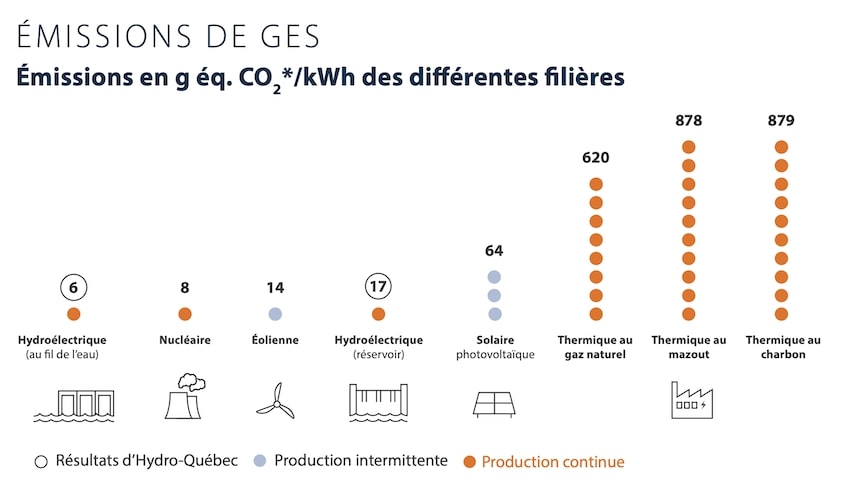
Figure 6. Comparison of GHG emissions from different energy sources. [Source: Hydro Quebec https://www.hydroquebec.com/data/developpement-durable/pdf/emissions-ges.pdf]
These different GHG emissions by energy source are also confirmed by other assessments (Figure 7).
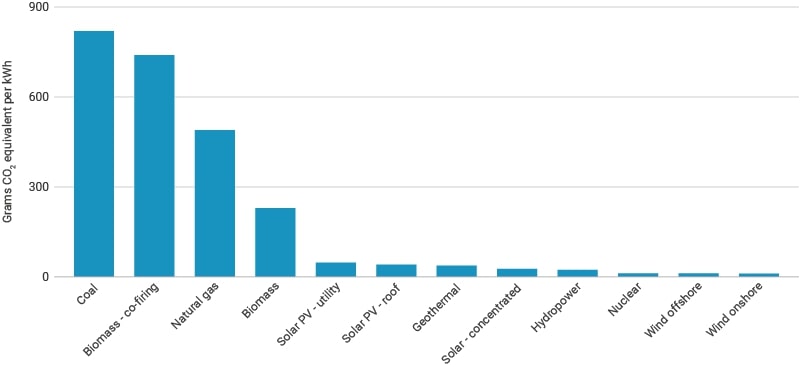
Figure 7. CO2 equivalent for an average life cycle. [Source: https: //www.world-nuclear.org/information-library/energy-and-the-environment/nuclear-energy-and-sustainable-development.aspx]
In terms of GHGs, the biggest concern remains emissions into reservoirs, although the comparative amounts are small and also temporary.
It should also be noted that the contribution to GHG emissions from hydropower systems during production is not measured in terms of fossil carbon; it is, in fact, the emission of carbon dioxide and methane produced by the decomposition of organic matter in the reservoirs. This is a temporary phenomenon that fades over time and returns to the emissions found in natural lakes.
It is during construction that GHGs are produced from fossil carbon, but this is relatively small compared to the EROI. Since during the production period, no more fossil carbon is reintroduced into the biological chain, hydropower is an energy source that is very respectful of the carbon cycle in the current biological chain
4. Comparative hazards and risks of energy sources
“Living is certainly not a risk-free endeavor” or “Any activity presents a danger”, certainly, but to be more precise, a few definitions are needed:
- the danger is a property or a capacity inherent to a situation, an equipment; the danger exists in itself and one must live with it;
- risk is the adverse event of exposure to a hazard that must be minimized and managed;
- exposure
- to risk is a notion of probability;
hence the equation: Risk = Hazard ∗ Exposure.
In practice, if one assumes that the past guarantees the future, one can assess exposure based on past damage, accumulated and related to time or any other physical measure. In this respect, statistics allow us to understand risk, which is the outcome we are interested in. Damage is the inevitable consequence of risk. The engineer has control only over exposure, whereas in the energy field, risks are quite differentiated.
From the point of view of sustainable development, mortality is certainly the most important damage to be considered, as evidenced by the availability of information on the subject, whereas data on material damage are much more difficult to obtain. Numerous regional and then global studies provide a very good perception of the mortality rate represented by different energy sources (Table 2).
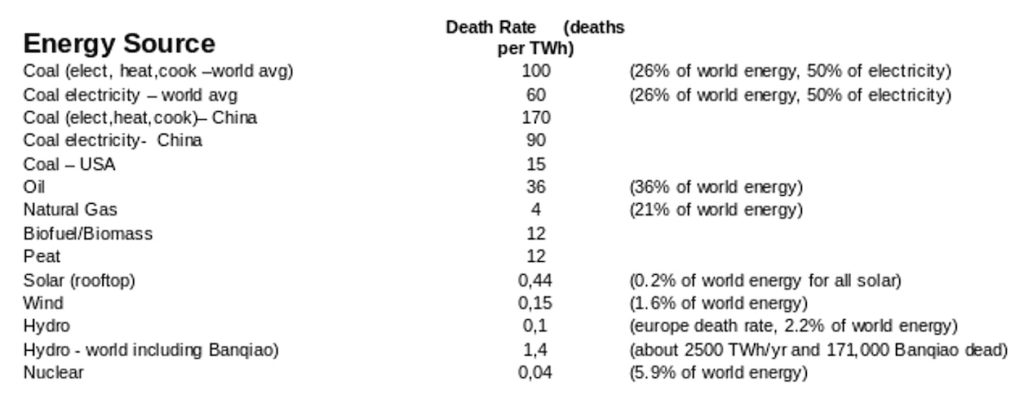
Table 2. Mortality rates by energy source. [Source: Nils Starfelt and Carl-Erik Wikdahl, Economic Analysis of Various Options of Electricity Generation – Taking into Account Health and Environmental Effects – https://www.nextbigfuture.com/2012/06/deaths-by-energy-source-in-forbes.html]
Using similar data, another representation is available as of 2018 (Figure 8).
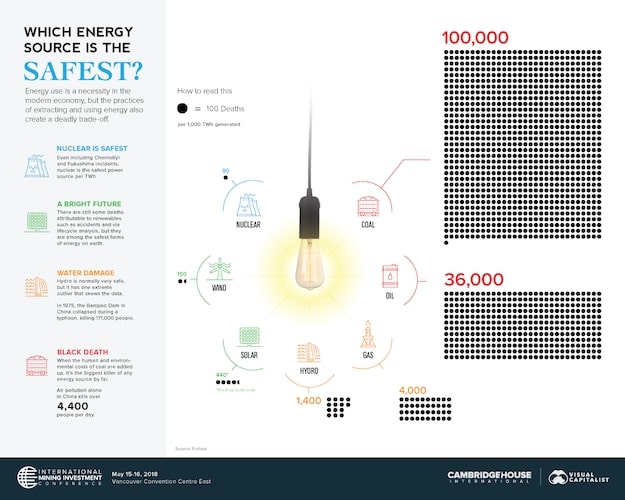
Figure 8. Energy source security. [Source: Jeff Desjardins https://www.visualcapitalist.com/worlds-safest-source-energy/]
The safest energy source is nuclear, although no energy source is perfectly safe. However, we note that two orders of magnitude separate the results for fossil fuels and other energy sources.
Hydropower is in an enviable position, except for the outlier of the 1975 Banqiao dam failure [1].Thus, if this event is not taken into account, the mortality rate for hydropower drops from 1.4 to 0.1 per TWh. This dam, which was built in 1959 to control floods, was destroyed during the Chinese Cultural Revolution. Without the Banqiao event, hydropower is less risky than all renewable energy sources and would be a thousand times less risky than using mineral coal.
5. Impacts on the biosphere
The exploitation of an energy source requires space that becomes less available, to varying degrees, to other uses, fauna and flora (Read: The constraint of social acceptability of onshore wind power in Europe).
One can think of:
- to the surfaces of occupied lands ;
- the environmental fluids, air, water that are polluted, altered.
These elements are thus made less accessible, in quality and quantity, for fauna or flora, including humans. It is therefore necessary to evaluate these impacts and to weigh their importance. Even in qualitative terms, the most glaring differences between the different energy sources can be appreciated.
5.1. Surface occupation
In this respect, hydropower is very land-intensive. In addition to built facilities such as power plants, dams, dykes, and other rights-of-way, reservoir power plants require square kilometers of flooded land. Moreover, an even larger part of the territory is hydrologically serviced, without any alteration, to collect water and feed these reservoirs through pre-existing natural channels. Therefore, the development of the territory by the hydroelectricity can in fact cover a whole country.
Comparisons are therefore necessary to appreciate this disadvantage. To do this, the following must be taken into account:
- the ecological quality of the occupied space;
- the degree of sharing of this space with fauna, flora or any other social use.
First, the ecological importance of the space occupied must be assessed. For example, the Robert-Bourassa generating station is dug under the mountain: the volume occupied is therefore of little quality for fauna, flora or any other use, except for the evacuation of the spoil, which must be relocated in the neighbourhood. On the other hand, the dam itself, the spillway, and the quarries that were exploited to build them have significantly altered areas of land of very good quality and leave little to share with the fauna and flora. One can imagine that the lands occupied by the thermal power plants are also of rather exclusive use.
The LG2 development (Figure 9) gives an idea of the scale of the spillway and main dam rights-of-way, which retain a head of almost 140 m.

Figure 9. The LG2 development includes a spillway and two power plants (Robert-Bourrassa and La Grande-2-A) with a capacity of 7,722 MW [Source: https: //michelsabourin.scenari-community.org/SimTurbTech/co/1_1_5_Occupation_du_territoire.html]
For hydroelectricity, the encroachment on the territory obviously does not stop there. The reservoirs created have flooded square kilometers of land of very good ecological quality. These areas taken away from terrestrial species become available to aquatic species, causing significant but temporary disturbance to the fauna and flora. Moving from a river to a lake significantly changes the habitat.
The satellite view of the James Bay project (Figure 10), which is still partial, shows how a hydroelectric development can modify a vast territory. Circled around are the reservoirs created to store hydraulic energy. It should be noted that outside of the areas flooded or affected by rising water, the hydrological network itself is not affected.
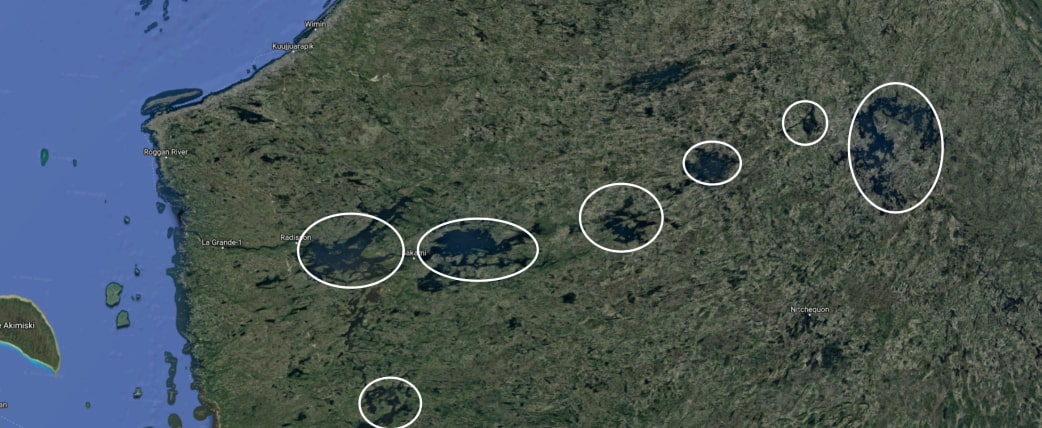
Figure 10. The reservoirs created by the James Bay project cover a territory measured in hundreds of kilometers. [Source: © Michel Sabourin 2020 from Google Maps]
Energy production occupies areas that in relation to other ecological activities can be:
- in complete exclusion ;
- in sharing ;
- without any nuisance.
Several mitigation solutions are implemented. In a non-exhaustive way, we can mention:
- plantings to restore exposed areas (Figure 11);
- spawning grounds to facilitate the transition between past and new aquatic environments (Figure 12);
- optimization of occupied spaces (Figure 13).
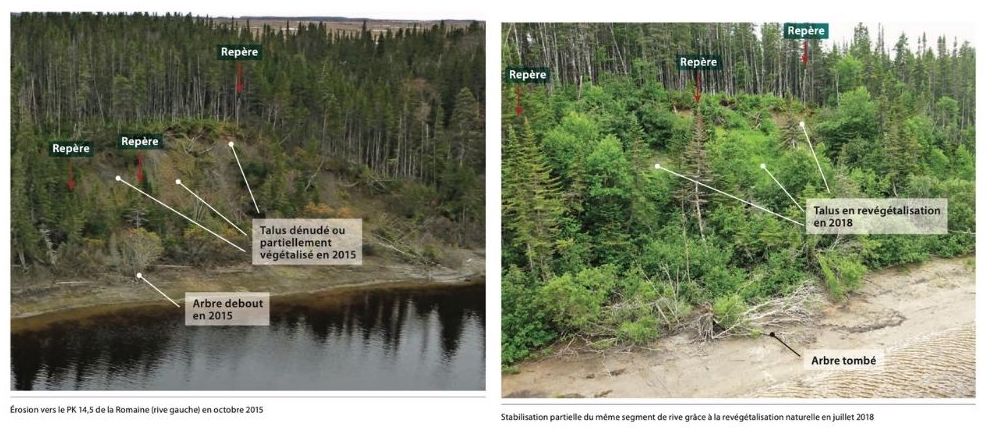
Figure 11. Revitalization plantings. [Source: Hydro Quebec https://www.hydroquebec.com/data/romaine/pdf/romaine-bilan-environnement-2018.pdf]
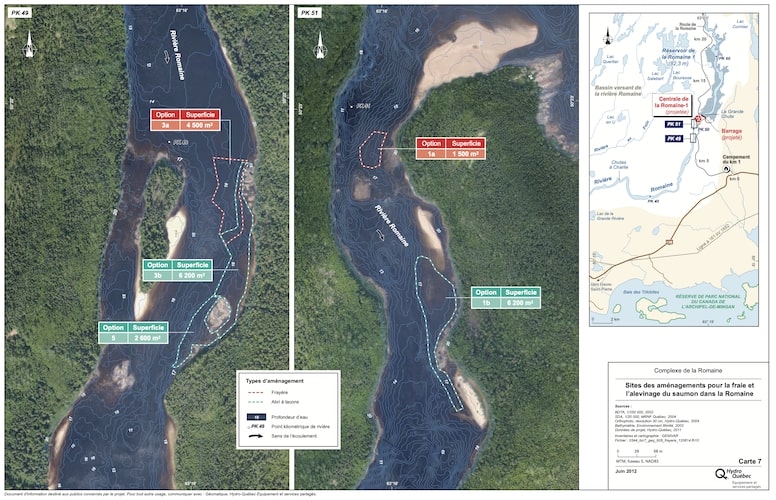
Figure 12. Spawning ground developments. [Source: Hydroquébec http://www.hydroquebec.com/data/romaine/pdf/frayere.pdf]
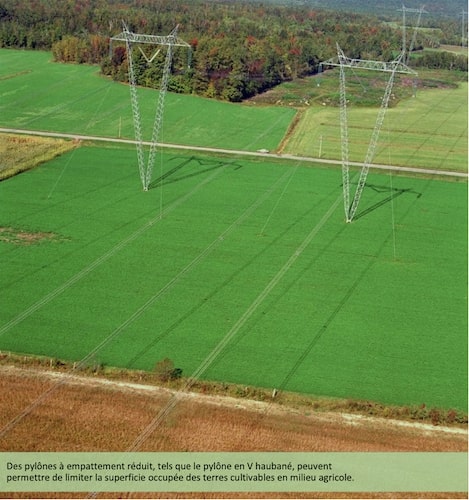
Figure 13. Space sharing. [Source: Hydroquébec https://www.hydroquebec.com/data/administrations-municipales/pdf/20190326-installations-amenagement-territoire.pdf]
5.2. Alteration of air and water fluids
Energy production can significantly affect the atmosphere. In addition to the production of GHGs (see above), water is very much affected because the quantities are considerable since they include all those included in the hydrographic network that is harnessed.
This water is affected in different ways:
- by chemical pollution ;
- by the imbalance in its interaction with the air of the atmosphere;
- by the disturbance of its flow.
The most significant chemical pollution of the water is that due to mercury is emitted into the air naturally from volcanoes and forest fires, or from human activities such as coal burning and garbage burning. It is transported in the atmosphere over long distances and then falls into lakes and forests with dust and rain.
When a new reservoir is impounded, the inorganic mercury accumulated on the land is suddenly transformed by bacteria into a form that is readily taken up by living organisms (Figure 14). This form of mercury (methylmercury) can become toxic at high concentrations. Mercury accumulates over the lifetime of fish so that older and larger fish have higher levels of mercury.
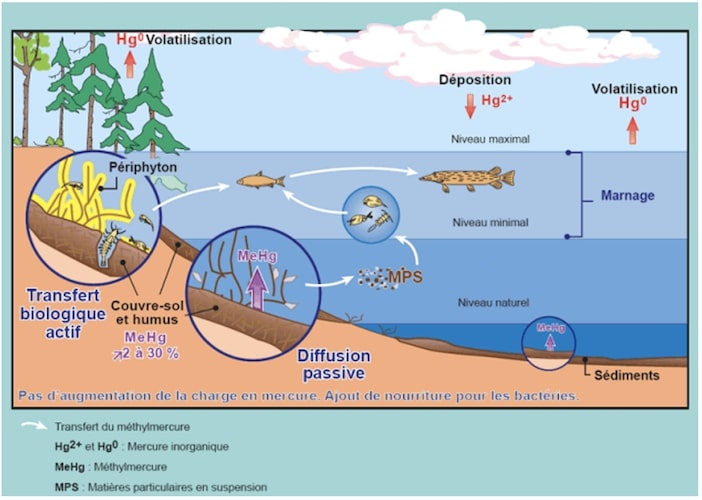
Figure 14. Mercury pathway shortly after reservoir impoundment. [Source: hydroquébec https://www.hydroquebec.com/developpement-durable/documentation-specialisee/mercure.html]
The water does not present any danger of toxicity if you drink it. However, predatory fish have high concentrations of mercury and human consumption is dangerous. The average mercury content of fish has increased by a factor ranging from 2 to 8, depending on the species and reservoir (Figure 15).
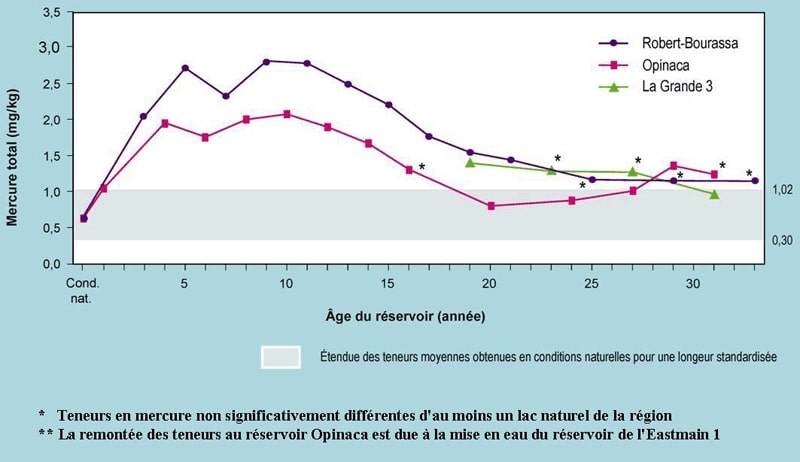
Figure 15. Changes in mercury levels in walleye. [Source: hydroquébec https://www.hydroquebec.com/developpement-durable/documentation-specialisee/mercure.html]
Mercury is a transient problem due to the flash flooding of the land under the new reservoir. After a few decades, contaminant levels return to the natural levels normally observed.
Another source of pollution is that due to the use of mineral lubricants for power plant equipment. This is an accidental phenomenon that is becoming better controlled and is fairly limited.
The modification of flows by the installation of dikes and dams or the use of spillways has consequences on water quality.
Natural waterfalls are often completely submerged and no longer contribute to the oxygenation of the water. This effect has important repercussions in hot climatic zones, the reservoir comes to lack dissolved oxygen especially at depth. If this water is captured by the turbine and sent to the river downstream, it kills all aquatic life. This is a well-studied phenomenon, which can be remedied by using turbines to introduce air into the water [2].
Another effect of the facilities is that during floods, spillways are used which often help dissolve excess air nitrogen in the water. Fish are affected and become subject to predation. Here, turbining the water instead of using the spillway reduces this effect and is therefore favorable. Unfortunately, it is very rare that turbines are designed for flooding.
Another nuisance created by the dam is the reduction of transits.
In mountainous areas such as the Alps, the Himalayas, the Rockies or the Andes, the waters are loaded with sediments which, transported by the currents, inevitably end up in the oceans and, during floods, enrich the flooded lands. The installation of dams obviously disturbs this transit, the sediments being deposited in the reservoirs to the point of filling them up in the more or less long term. This phenomenon can be managed by using bottom emptying devices (Figure 16).
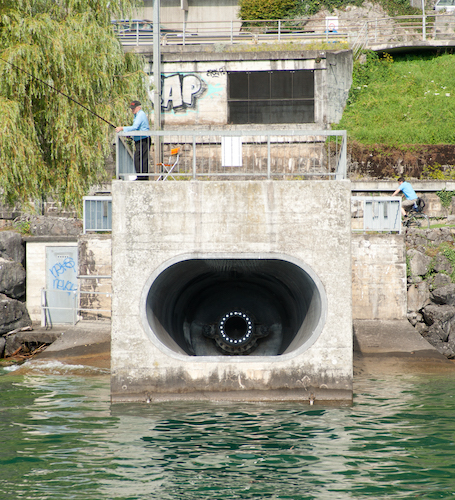
Figure 16. Bottom valve used to drain a reservoir of its sediments. [Source: Ludovic Péron, CC BY-SA 3.0, via Wikimedia Commons]
The transit of aquatic fauna is also disrupted by dams. This especially affects species that need to migrate between oceans and rivers. Anadromous fish move up rivers to breed while catadromous fish return to the sea to breed. Salmon, shad and sturgeon are anadromous and eels are catadromous. It is these species that are of most concern.
For the upstream migration, alternative passages allow the fish to pass the dam efficiently. These facilities are therefore built in parallel and do not affect the turbines (Figure 17).
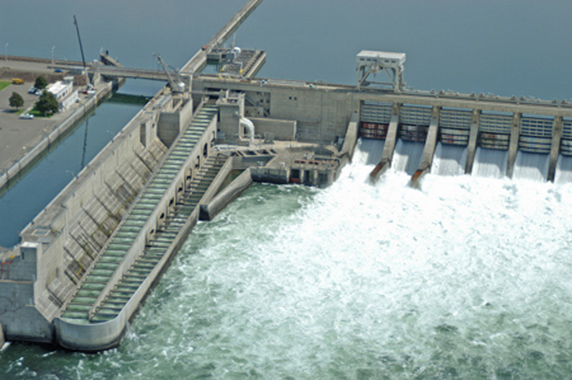
Figure 17. Adult salmon passage at McNary Generating Station. [Source: https: //www.salmonrecovery.gov/Hydro/Structuralimprovements/AdultFishLadders.aspx]
The turbines can be used during the downstream migration. Indeed, to pass the dam, the turbine presents a sometimes unavoidable choice, which essentially justifies optimization work (Figure 18). This work allows large turbines in the Columbia River to increase fry survival from 92 to 98% for new designs [3].
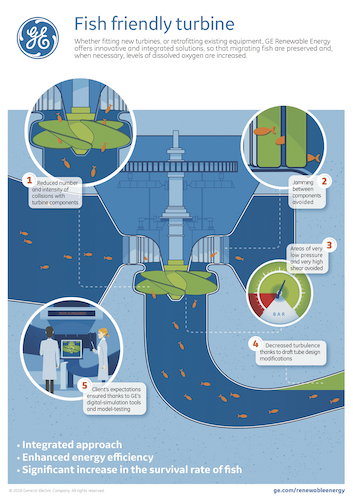
Figure 18. Study of fish detrimental phenomena in turbines. [Source: General electric https://www.ge.com/news/reports/go-with-the-flow-these-engineers-are-building-a-fish-friendly-hydropower-plant]
Hydroelectricity is certainly the energy source that affects the largest areas of land. However, the most important impacts are subject to mitigation solutions and generally fade over time.
In many cases, the development of hydroelectric projects has made it possible to study in depth the ecological systems in territories that are becoming more accessible, to develop them and to allow for socially beneficial exploitation. It is also an opportunity to make inventories of the fauna and flora and to better understand how they are affected in order to remedy them effectively.
6. Consumption of materials
The concept of renewable energy is based on natural processes that are continuously renewed. Hence the importance of the materials used for implementation and operation because, like fuel, these materials are consumed and are no longer available for other uses.
We can therefore focus on the quantity and quality aspects (Figure 19).
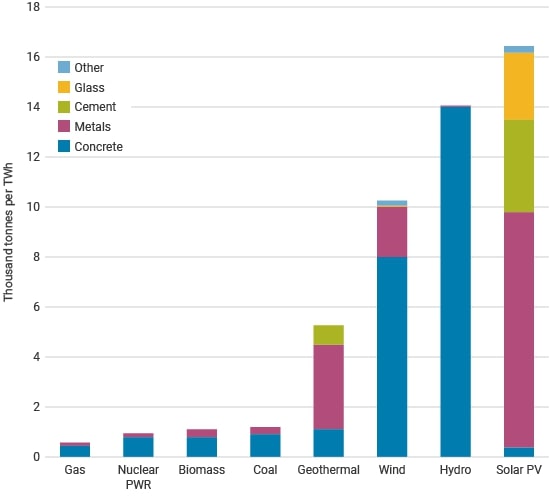
Figure 19. Materials used by the different energy sources. [Source: https: //www.world-nuclear.org/information-library/energy-and-the-environment/nuclear-energy-and-sustainable-development.aspx]
The quantity aspect itself is somewhat redundant with the GHG emissions analysis and with the ERR since work requiring the extraction and refinement of materials consumes energy and emits GHGs.
The quantity analysis alone is also misleading. The degree of material scarcity must be taken into account, which can be understood by juxtaposing the scarcity of rare earths and the abundance of materials used to make concrete.
The scarcity has an effect on the cost of the material which will be reflected in the cost of the energy produced and is therefore automatically taken into account in the energy choices provided that other aspects, such as GHG emissions in particular, also penalize the costs.
In any case, it should be noted that:
- the hydraulic energy calls for a great quantity of concrete which is abundant and available and of a few metals;
- wind and solar energies use large quantities of more exotic materials and metals;
- thermal energy uses a little concrete and large quantities of metals.
On this aspect of materials, nuclear energy requires the least.
7. Conclusion
In terms of sustainable development, the exploitation of hydropower presents globally the least impact on the environment, while being very often socially and economically acceptable (Read: Hydropower, a vital asset in a power system with increased need for flexibility).
It is a renewable energy source, which is the most efficient to operate, emits very little GHG and has a higher EROI than any other energy source. It has a relatively low mortality risk, occupies a large space in the biosphere and uses a large amount of concrete. Because of its operating flexibility due to large reservoirs and pumped storage facilities, it facilitates grid management by allowing for constant generation such as thermal and nuclear and intermittent generation such as wind and solar.
On a power grid, hydropower is a key asset as a controllable, renewable generation and a storage solution for large quantities of energy.
Notes and references
Cover image. [Source: Arnaud 25, CC0, via Wikimedia Commons]
[1] For more information: https: //fr.wikipedia.org/wiki/Barrage_de_Banqiao
[2] For more information: https: //michelsabourin.scenari-community.org/SimTurbTech/co/1_4Augmentation_de_loxygene_dissout.html
[3] For more information: https: //michelsabourin.scenari-community.org/SimTurbTech/co/1_3Les_turbines_ichtyophiles.html


